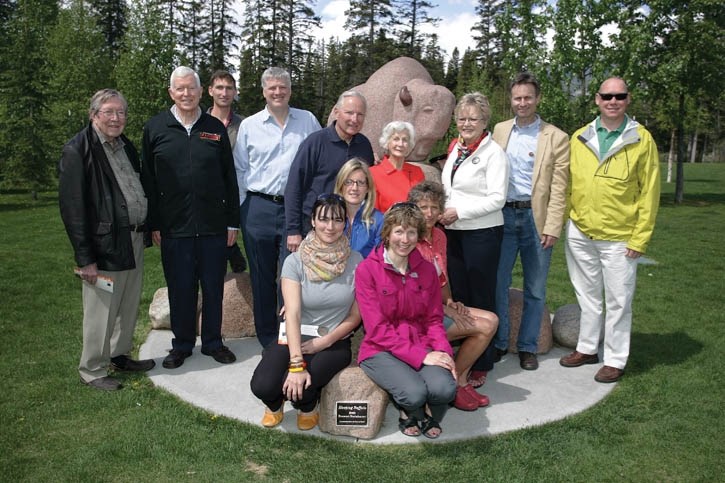Even though plains bison were practically wiped out by the 1870s, the large ungulates are so ingrained in the collective psyche of the West that their image can be found throughout the Town of Banff in enough places for the education and outreach program Bison Belong in Banff National Park to create the Banff Bison Stroll.
This self-guided interpretive walk, available through smartphones and tablets or cards at 60 hotels in Banff and Lake Louise, offers the opportunity to discover the various bison-related symbols found throughout the heart of the Banff town site.
In a sound clip accompanying the Bison Stroll website (bisonbelong.ca), Canmore-filmmaker Leanne Allison says, “If you stood on what is now the corner of Buffalo Street and Banff Avenue 150 years ago, you might well have seen free roaming bison. They disappeared shortly after the slaughter of the plains bison in the 19th century. One might call it an iconic disappearance, a rare example of a near extinction in North America that we haven’t forgotten. There are symbols of bison all over Banff.”
The Bison Stroll is separated into three distinct components, Banff Avenue, Buffalo Street and the various cultural and historical facilities, offering 30 stops where residents and tourists can learn more about bison and Banff National Park, including an approximately 2,000- to 4,000-year-old bison skull found during excavations of Bison Courtyard on Bear Street.
The 1997 management plan for Banff National Park required Parks Canada to investigate the feasibility of restoring a breeding herd of plains bison to Banff. The 2010 plan brought this priority to the forefront with the initiation of a public consultation process in early 2012.
The Eleanor Luxton Historical Foundation (ELHF) founded Bison Belong in 2009 to support Parks Canada as it moves towards the goal of restoring wild plains bison to Banff National Park. The ELHF also prepared a bison restoration proposal to assist Parks as it moved forward with the project.
And why is it that bison, even though they’ve been largely absent from the valleys of the Rocky Mountains and the Prairies, still hold such a prominence throughout the West, Banff included?
“What does their existence, even in our imagination, do for us? And why do we hold onto them?” Allison asked. “I think the answer to this is different for everyone. For me, they represent the possibility of a wilder world. When I’m on the prairies, or for that matter in an open meadow here in Banff National Park, I like to let my eyes go fuzzy and imagine bison back where they belong.”
The Bison Stroll, she added, provides an opportunity to “re-imagine a future right here in Banff where bison belong once again.”




